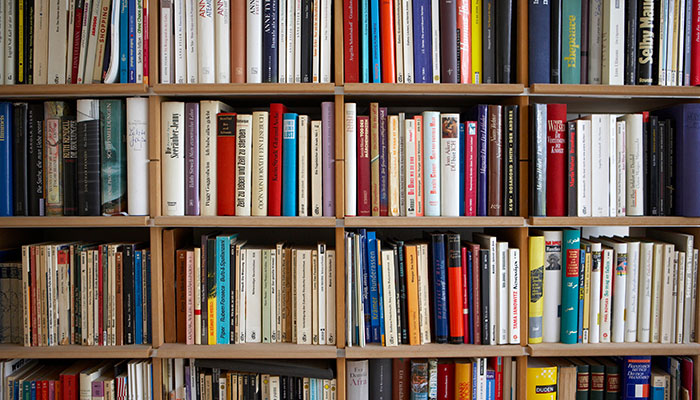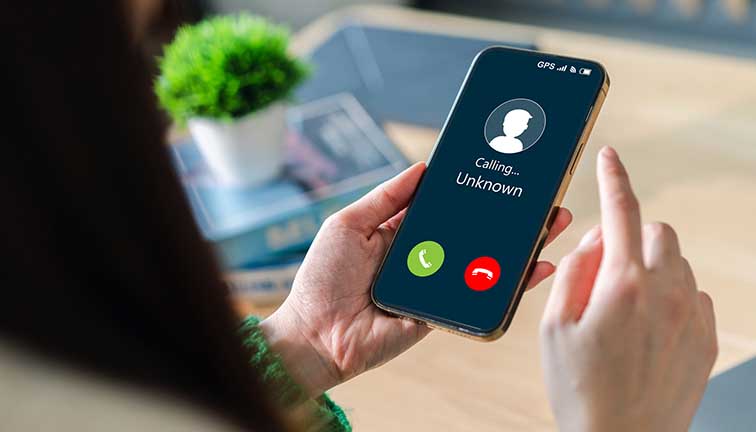The lives of authors have been changed dramatically by two things: digital technology and the internet.

Power shift: Illegal streaming and downloading have negatively affected authors' revenue, transferring wealth from creators to platform owners, says Professor Potts.
Today, almost every form of creative work can be digitised and transmitted across the internet through downloading or streaming.
Often, this transmission is done illegally, in defiance of the law of copyright, meaning the author - whether a literary author, songwriter, composer, filmmaker, visual artist, designer or choreographer - derives no royalties.
Since the advent of copyright in the 18th century, the ‘modern’ author was the creator of original works protected by copyright. The author was considered to own the work and was remunerated in the form of royalties for every copy sold.
The rise and rise of network culture
‘Network culture’ emerged around 1995, with the rapid growth of the World Wide Web, when culture was increasingly conducted online.
Since 2008, with the widespread use of smartphones, network culture has also been a mobile network culture, so that users are continually connected to the internet.
One feature of network culture is that online users are as much producers as consumers of information and culture; the ‘creative re-use’ of copyrighted works is one aspect of users’ ability to manipulate and transmit digital information online.
Much network culture proceeds with little or no regard for author’s rights: internet users often express a sense of entitlement, that everything on the web should be freely available for consumption or re-use – that is, the users, not the authors, claim ownership of the works.
Authors and their enemies
Illegal downloading and streaming have had the greatest adverse effect on authors’ rights and revenue. In the same period that authors’ royalties drastically declined, Google’s revenue astronomically increased – from half a billion dollars US in 2002 to $75 billion in 2015. This indicates a massive transfer of wealth from the actual creators – authors – to platform owners, including the operators of pirate sites.
I call network culture a ‘post-authorship’ zone because the emphasis in free culture and the gift economy is on sharing information and culture, not recognising individual author’s rights.
Personally, I think authors and artists are safe ... A work generated by AI is only as good as the system’s machine learning and its database.
Wikipedia, for example, is a highly successful demonstration of collective intelligence, the wisdom of the crowd, a massive multi-authored work – but no individual author of an entry in Wikipedia has any copyright or author’s rights in the work.
Advocates for the digital commons or electronic public domain celebrate connectivity and re-use of information, with no respect for the individual author or possible remuneration for the copying of their work. Even the database of ChatGPT – the internet – comprises millions of authors’ works – but no-one is being recognised, or paid, for their contribution to the database.
Does the author need to be human?
In The Near-Death of the Author: Creativity in the Internet Age, I refer to an article commissioned by Britain’s Guardian newspaper in 2020 on Artificial Intelligence (AI) – written by GPT-3, an AI system.

Safe: Human creativity and inspiration are far greater influences on art, writing and music than AI, says Professor Potts.
The editors of the newspaper asked for 500 words on the theme of why humans have nothing to fear from AI. GPT-3 generated eight articles which the editors pieced together into one. The finished article is a readable, logical argument – an example of AI creating a work that could pass for human authorship.
There have been novels, musical compositions, art works, and films that, in many cases, are difficult to detect as being generated by AI.
Along with this has come a kind of existential crisis for authors: some theorists have asked whether an author needs to be human, or whether many forms of authorship (journalism, for example) could be performed by AI instead of humans. Some law reformers have even called for works generated by AI to be granted copyright protection.
Personally, I think authors and artists are safe, and that we’re not nearing the death of the author, to be replaced by AI systems.
A work generated by AI is only as good as the system’s machine learning and its database. Even then, an AI-generated work is only an approximation, or simulation, of a new work within a given genre or style.
Computer systems have zero emotional capacity. When we read a work of literature or watch a film, we connect empathetically with characters on an emotional level; the author will draw on a lifetime of experiencing and of observing human emotions and relationships. AI could deliver only a detached imitation of that emotional engagement.
The mystery of creativity
Similarly, a creative artist or author is often inspired to create in a way we still find mysterious. Creativity and inspiration are not properly understood, and that mystery remains an appealing part of the creative process and of works of art.
An AI system isn’t inspired to create, it simply re-arranges elements in its database according to rules it has learnt.
Journalists shouldn’t start looking for a new career just yet. An AI system may be able to assemble an op-ed piece drawn from opinions and arguments across the internet, but original investigative journalism requires a different level of insight, knowledge and imagination on the part of the journalist.
Reinventing the revenue stream
Before the introduction of copyright, an author or artist needed one thing to publish a work of art: patronage. Patrons were generally from the aristocracy, with the funds to support an author’s career and get new works published.
Now, with the decline of copyright in the internet age, authors of all types have returned to patronage as an alternative source of revenue. But this is a new patronage: democratic, in the form of crowdfunding, rather than aristocratic.

Time for change: Professor Potts, pictured with his new book, argues the need for copyright law reform to protect the income of authors, composers, screen writers, film makers and musicians.
New patronage sites like Patreon and Substack operate as a subscription service, whereby subscribers pay a small recurring amount to the author, in return for texts or works created especially for subscribers. The donors effectively become group patrons of the author.
Otherwise, authors generally need other sources of income – from performing, touring, teaching, speaking, selling merchandise, or non-fungible tokens (NFTs) which could develop into a new form of revenue for artists without the old gatekeepers of galleries, publishers, record companies.
The NFT is a unique digital token or proof of ownership, traded on a blockchain (decentralised shared database), sometimes for stupendous amounts of cryptocurrency. The positive aspect of NFTs for authors and creative artists is that in most cases the author retains control of the copyright, even after the NFT is sold.
Authors may also build an online presence whose following can become monetised. This requires authors to function in other roles: entrepreneur, administrator, promoter and self-publicist.
Is Big Data the Grim Reaper?
Big data writing, also known as electronic or non-linear writing, is another case whereby contemporary technologies – high-speed computers, huge databases, the internet – seem to herald the death of the author.
There are some highly visible big data writing works, notably Moveable Type, a work installed in the foyer of the New York Times building in Manhattan. This work generates continuous streams of text drawn from the nyt.com database, according to rules programmed into algorithms.
- Viral verse: how Instapoets are reinventing the art
- Ultra-precise medical robot could help slash cancer deaths
Because the text flashed onto the works’ many screens is unpredictable, drawing from whatever new material has been entered into the database, the electronic writing is produced without the agency of a human author. The author appears to be the algorithm, in league with the database.
However, it could be argued that the authors of the work are the artist-engineers, Ben Rubin and Mark Hansen, who designed the work and coded the algorithms. If so, they are a new type of ‘hands-off’ author, in that they have no control over the continuous flow of text.
Streamlining copyright law
Copyright remains the best source of revenue for authors, given the limitations of the new patronage, NFTs, etc. But copyright law needs to be reformed so that it is less likely to be infringed.
Copyright has been wilfully ignored and infringed by internet libertarians and free culture advocates since the mid-1990s, on the grounds that it served the economic power of bloated corporations rather than the interests of authors, and that enforcement of copyright acted as a form of censorship in online culture.
The term of copyright protection should be drastically reduced from the life of the author plus 70 years, to something like 25 years, allowing for more cultural material to enter the public domain, while an expanded fair use should permit sampling or quotation of works in the creative re-use mode.
This streamlined form of copyright may then generate more respect for author’s rights, so that authors and artists continue to earn remuneration for their creative efforts.
John Potts is a Professor in the Department of Media, Communications, Creative Arts, Language and Literature and the Director of the Centre for Media History at Macquarie University.
The Near Death of the Author: Creativity in the Internet Age by John Potts is published by University of Toronto Press.



